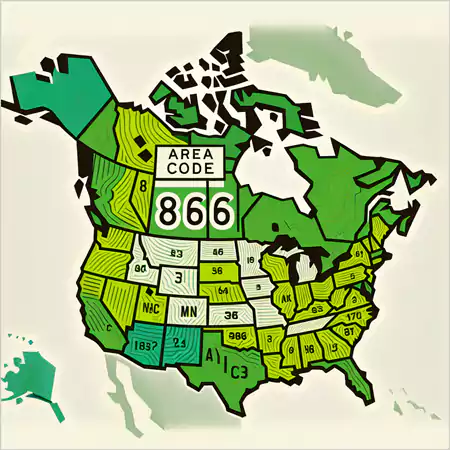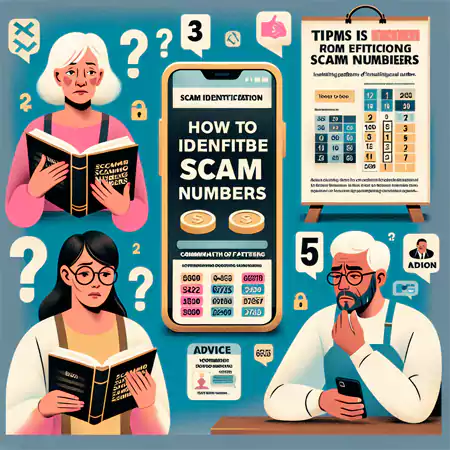Beyond the Numbers Understanding 866-677-2629 and its Impact on Your Daily Calls

In today’s increasingly connected world, phone calls are an integral part of how we communicate, conduct business, and stay informed. But with the rise of digital communication, there’s also been a corresponding increase in unsolicited and potentially harmful calls. If you’ve received a call from 866-677-2629, you’re not alone. This blog post aims to provide valuable insights into identifying and dealing with such calls, focusing on the 866 area code and how to protect yourself from potential scams.
Short Summary
In summary, while digital communication has transformed how we interact, it has also led to an increase in unwanted phone calls. By understanding the nature of calls from numbers such as 866-677-2629, individuals can better protect themselves from scams and maintain their privacy. Being aware and proactive is essential in today’s phone-reliant world.
Key Takeaways
- Be vigilant: Always verify unknown numbers before engaging in conversation, especially those from the 866 area code.
- Use call-blocking technology: Employ apps and services that can help block unwanted calls and filter potential scams.
- Report suspicious activity: Notify authorities or your phone provider about any suspicious or fraudulent calls.
- Stay informed: Regularly educate yourself about new scams and tactics used by scammers to better protect your personal information.
- Privacy matters: Refrain from sharing sensitive information over the phone unless you are certain of the caller’s identity.
The Rise of Unsolicited Calls
Unsolicited calls have become a common nuisance for many people. Whether it’s a robocall, telemarketing pitch, or potential scam, these calls can disrupt your day and compromise your personal information. In the U.S., billions of robocalls are made each year, frustrating recipients nationwide. Understanding who might be calling and why is crucial in determining the best course of action.
Engaging with unsolicited calls isn’t just a waste of time; it can be risky. Scammers often use tactics to trick you into sharing personal information or making financial transactions. It’s essential to recognize the signs of these calls to protect yourself and your loved ones.
The Federal Trade Commission (FTC) and Federal Communications Commission (FCC) have been working to combat these calls through various regulations and initiatives. However, staying informed and proactive remains one of the best defenses against such disruptions.
Also Read: Get_Ready_Bell:Client_Pulse: The Secret to Business Success? Understanding The Client Pulse
What is the 866 Area Code?

The 866 area code is one of several toll-free area codes used in North America. Toll-free numbers allow callers to reach businesses and services without incurring charges. Companies often use them for customer service or support lines, making it easier for clients to connect without cost concerns.
Although toll-free numbers like those in the 866 area code are commonly associated with legitimate businesses, scammers also exploit them. They may use these numbers to appear credible and trustworthy, luring unsuspecting individuals into falling for their schemes.
Understanding the nature of toll-free numbers is important for anyone who frequently receives calls from such numbers. By recognizing how these numbers work, you can better assess the legitimacy of incoming calls and avoid potential pitfalls.
Who is Behind 866-677-2629?

Determining who is behind a call from 866-677-2629 can be challenging. In some cases, it could be a legitimate business trying to reach out to clients. However, it could also be a scammer attempting to deceive you. Identifying the caller is key to understanding their intentions and deciding your next steps.
Several online directories and forums allow users to report and discuss unknown numbers. These platforms can be valuable resources for gathering information about specific numbers, like 866-677-2629. Reading other users’ experiences can provide insights into the nature of the calls and whether they should be a cause for concern.
If you’re unsure about a call from this number, it’s best to err on the side of caution. Avoid sharing personal information or making commitments until you’re confident in the caller’s authenticity.
Recognizing Scam Calls
Scammers are becoming increasingly sophisticated in their methods, making it crucial to recognize the signs of a scam call. Some common tactics include impersonating government agencies, claiming you’ve won a prize, or threatening legal action if you don’t comply with their demands. These calls often create a sense of urgency to pressure you into reacting without thinking.
The 202-873-2990 number is another example of potential scam activity. Just like 866-677-2629, it’s important to approach calls from unfamiliar numbers with skepticism. Scammers may use different numbers to reach unsuspecting victims, so staying vigilant is essential.
Recognizing scam calls requires a discerning ear and an understanding of common red flags. Being aware of these warning signs can help you protect your personal information and avoid falling victim to fraudulent schemes.
Protect Yourself from Scam Calls
Protecting yourself from scam calls involves a combination of awareness, technology, and vigilance. One effective strategy is to utilize call-blocking apps or services that can screen and block potential scam calls before they reach you. These tools can significantly reduce the number of unwanted calls you receive.
Additionally, familiarizing yourself with known scam tactics and educating yourself on how to respond can empower you to handle such calls confidently. By staying informed, you can quickly identify when a call is suspicious and take appropriate action.
Remember that you have the right to hang up or ignore calls that seem fraudulent. Trust your instincts and prioritize your safety over engaging with unknown callers.
Reporting Scam Calls
If you receive a call you suspect is a scam, reporting it can help authorities track and combat fraudulent activity. The FTC and FCC both accept reports of scam calls, contributing to efforts to identify and shut down scams that target unsuspecting individuals.
Reporting scam calls also helps raise awareness about emerging tactics and trends in fraudulent activity. By sharing your experiences, you contribute valuable information to the broader community, helping others protect themselves from similar schemes.
Taking proactive steps to report scam calls is essential in the fight against phone-based fraud. Every report counts towards making communication networks safer for everyone.
Building a Safer Communication Environment
Creating a safer communication environment requires collaboration between individuals, businesses, and regulatory bodies. While authorities work to enforce regulations and technology providers develop solutions, individuals play a critical role by staying informed and proactive.
One way to contribute to a safer environment is by educating friends and family about the risks of scam calls and how to handle them. Sharing information and resources can empower others to protect themselves and reduce their vulnerability to fraudulent activity.
By collectively working towards a safer communication landscape, we can minimize the impact of scam calls and create a more secure environment for everyone.
Best for Read: Fun88ML.com: Your Ultimate Online Gaming Destination
Resources for Identifying Scam Numbers

There are several resources available to help individuals identify scam numbers like 866-677-2629. Online directories, forums, and mobile apps provide platforms for users to share information and experiences, building a comprehensive database of known scam numbers.
These resources enable individuals to gain insights into specific numbers, helping them make informed decisions when receiving calls from unfamiliar sources. By utilizing these tools, you can enhance your ability to recognize and respond to potential scams effectively.
Staying connected with online communities focused on combating scam calls can provide ongoing support and updates on emerging threats.
Future Trends in Scam Calls
As technology evolves, so do the tactics employed by scammers. Future trends in scam calls are likely to involve even more sophisticated techniques, leveraging advancements in artificial intelligence and automation to deceive targets. Scammers may increasingly use AI-driven voice technology, creating automated systems that mimic human conversation more convincingly than ever before. This could make it harder for individuals to discern authentic interactions from fraudulent ones.
Additionally, the proliferation of data breaches means that scammers could have access to more personal information, allowing them to tailor their schemes more effectively and target individuals with precision. The use of deepfake technology could also become prevalent in voice calls, where scammers create realistic synthetic voices of trusted acquaintances or authority figures to trick victims into compliance.
Another trend might be the expansion of international scam operations, whereby perpetrators operate across borders, complicating enforcement efforts and exploiting regulatory gaps between countries. As scammers become more adept at masking their identities and locations, international cooperation among law enforcement agencies will be vital in combating these threats.
Staying ahead of these trends requires ongoing vigilance, the adoption of cutting-edge technologies for detection and prevention, and enhanced public awareness campaigns to educate individuals on recognizing evolving scam call tactics.
The Role of Technology in Combating Scam Calls

Technology plays a vital role in the battle against scam calls. Advancements in artificial intelligence and machine learning have enabled the development of sophisticated call-blocking and screening tools. These technologies analyze call patterns and behaviors to identify and block potential scams before they reach you.
Telecom companies are also implementing measures to verify and authenticate calls, reducing the likelihood of scammers successfully reaching their targets. By leveraging technology, individuals can bolster their defenses against fraudulent activity.
Keeping up with technological advancements and utilizing available tools can significantly enhance your ability to combat scam calls effectively.
Staying Informed and Proactive
Staying informed is one of the most powerful tools in the fight against scam calls. Regularly updating yourself on the latest scam tactics and trends can empower you to recognize and respond to potential threats promptly.
Subscribing to alerts or newsletters from reputable sources can provide valuable insights into evolving scams and strategies for protection. By maintaining a proactive stance, you can minimize your risk of falling victim to fraudulent calls.
Taking the initiative to stay informed and engaged in the fight against scam calls is essential for safeguarding your personal information and communication channels.
Key Protective Strategies Against Scam Calls
To effectively safeguard yourself against scam calls, several strategies can be employed. First, utilize call-blocking apps that can screen and prevent scam calls from reaching you. Staying informed about common scam tactics and red flags is crucial, enabling you to recognize suspicious calls. Educating friends and family on how to identify and handle scam calls can collectively improve awareness and preparedness. Additionally, proactively reporting suspected scam calls to authorities helps track and combat fraudulent activities, while leveraging technology such as AI-based call screening tools enhances your defenses. By remaining vigilant, informed, and using available resources, you can significantly reduce your risk of falling victim to scam calls.
Further Reading and Resources
To deepen your understanding of scam calls and explore additional strategies for protection, consider the following resources:
- Federal Trade Commission (FTC) Website: Visit the FTC’s website for comprehensive guides on identifying and reporting scam calls. The site offers a wealth of information on consumer protection and the latest scams to watch out for. FTC Consumer Information
- Federal Communications Commission (FCC) Website: The FCC provides resources and alerts about scam calls, including tips on preventing unwanted calls and the actions being taken to combat phone fraud. FCC Unwanted Calls
- Cybersecurity Journals and Publications: Reading scholarly articles and white papers on cybersecurity can offer insights into the technical aspects of phone scams and the latest technological solutions being developed.
- Online Forums and Communities: Engage with communities on platforms like Reddit or specialized forums to learn from others’ experiences with scam calls and to share your own insights. These networks can be valuable for real-time updates on emerging scams.
- Books on Consumer Protection: Explore books that delve into consumer protection strategies and phone scam avoidance, such as “The Art of Scam Busting” or “Protect Yourself from Phone and Internet Scams.”
These resources can equip you with the knowledge and tools needed to defend against phone scams effectively and stay one step ahead of scammers.
Conclusion Navigating the World of Scam Calls
In an era where communication is more accessible than ever, the rise of scam calls poses a significant challenge. However, by understanding the nature of numbers like 866-677-2629 and recognizing the tactics of scammers, you can protect yourself and your loved ones.
Being vigilant, utilizing technology, and staying informed are key components of a comprehensive defense strategy. By adopting these practices, you can effectively minimize the impact of unsolicited calls and contribute to a safer communication environment.
Remember that your safety and security are paramount, and taking proactive steps to protect yourself is a crucial part of navigating the modern communication landscape.
Next Read: Virginia News: Continuous Flow Intersection and the 2014 Hummer
FAQs About Scam Calls
Ans: Scam calls often originate from unknown or masked numbers and may involve urgent requests or threats. Common signs include requests for personal information, pressure to make quick decisions, or offers that seem too good to be true.
Ans: If you receive a scam call, do not provide any personal information. Hang up immediately and report the number to the appropriate authorities or regulatory bodies, such as the FTC or FCC, to aid in tracking fraudulent activities.
Ans: Call-blocking apps can significantly reduce the number of scam calls you receive by filtering out known scam numbers. However, they may not be completely foolproof, as scammers frequently change tactics, so staying vigilant is also important.
Ans: You can report suspected scam numbers to federal agencies such as the FTC or FCC, which have online reporting tools. Additionally, you can notify your phone carrier, which may have specific protocols for handling scam calls.
Ans: While it’s challenging to completely eliminate scam calls, combining strategies such as using call-blocking apps, staying informed about emerging scams, and being cautious with personal information can greatly minimize their occurrence.
- Key Takeaways
- The Rise of Unsolicited Calls
- What is the 866 Area Code?
- Who is Behind 866-677-2629?
- Recognizing Scam Calls
- Protect Yourself from Scam Calls
- Reporting Scam Calls
- Building a Safer Communication Environment
- Resources for Identifying Scam Numbers
- Future Trends in Scam Calls
- The Role of Technology in Combating Scam Calls
- Staying Informed and Proactive
- Key Protective Strategies Against Scam Calls
- Further Reading and Resources
- Conclusion Navigating the World of Scam Calls
- FAQs About Scam Calls









